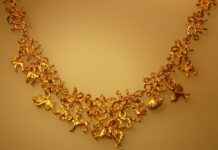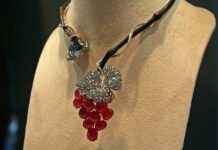Bangles have been an integral part of human adornment for thousands of years, serving not only as decorative items but also as symbols of cultural identity and social status. This article delves into the rich history and diverse symbolism of bangles across various cultures, highlighting their significance, materials, designs, and the meanings they hold in different societies.
The Origin of Bangles
Bangles date back to ancient civilizations, with archaeological findings suggesting their existence in regions such as the Indus Valley and ancient Egypt. Initially crafted from natural materials like shells and bones, they evolved into intricate pieces made from metals and glass. This evolution reflects not only advancements in craftsmanship but also shifts in societal values and aesthetics.
Cultural Significance of Bangles
Across many cultures, bangles are laden with meaning. In India, for instance, they symbolize marriage and prosperity, often being gifted to brides during wedding ceremonies. In contrast, in Middle Eastern cultures, bangles may signify wealth and status, showcasing the wearer’s affluence through elaborate designs and precious materials.
- Bangles in Indian Culture: In India, specific colors and materials are associated with different occasions, making them significant in cultural rituals.
- Traditional Indian Bangles: Traditional bangles are crafted from materials like glass, gold, and silver, each representing different aspects of life.
- Modern Interpretations of Bangles: Contemporary designs often blend traditional motifs with modern aesthetics, appealing to a broader audience.
Bangles in African Traditions
In Africa, bangles are often used in rituals and celebrations, representing community ties and personal identity. They are made from a variety of materials, including metals, beads, and natural fibers, reflecting the local culture and craftsmanship.
The Global Influence of Bangles
As cultures intersect, the influence of bangles has transcended borders, becoming a fashionable item in global markets. In Western fashion, for example, bangles are often seen as trendy accessories, showcasing a fusion of styles from different cultures.
Conclusion
The future of bangles is promising, with evolving designs that continue to honor traditional craftsmanship while embracing modern trends. As societies change, so too will the meanings and uses of bangles, ensuring their place in cultural heritage for generations to come.
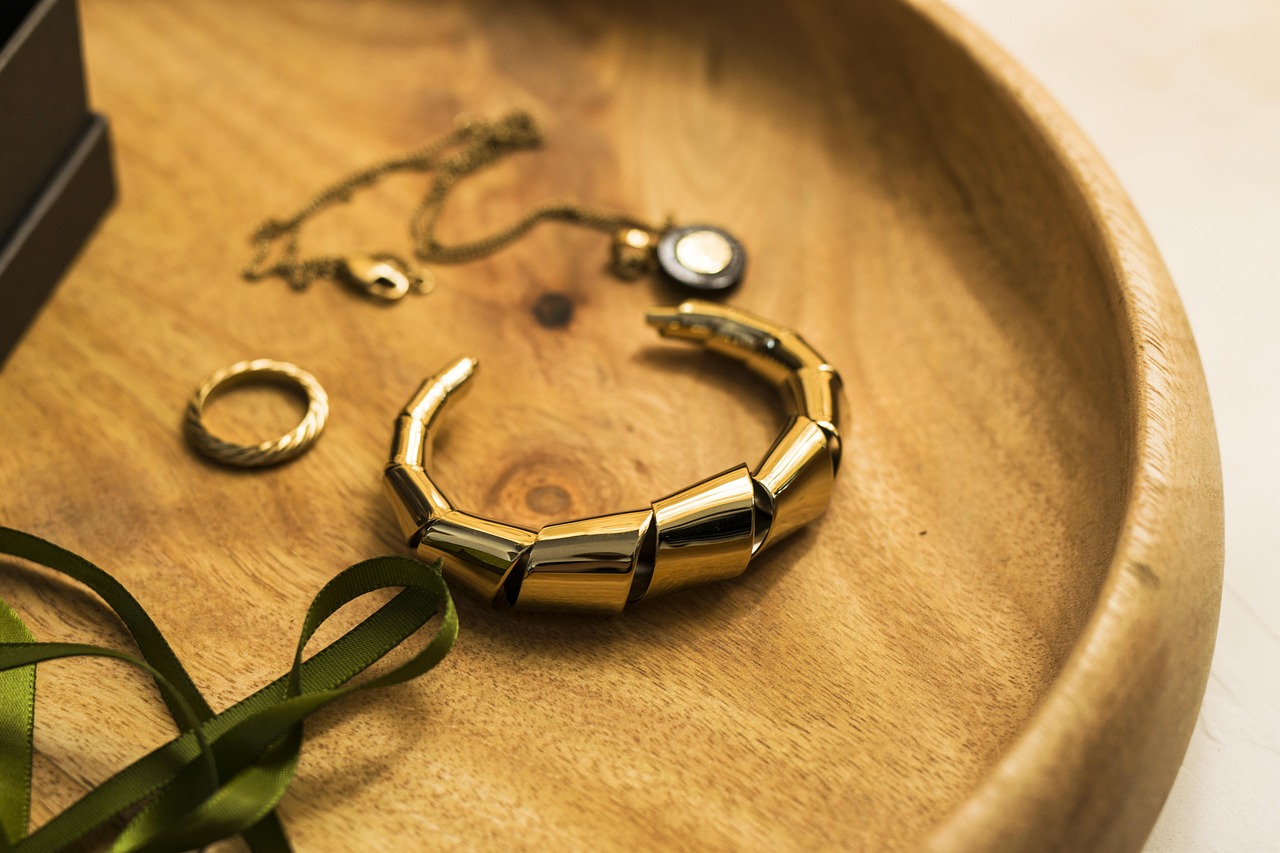
The Origin of Bangles
Bangles are not merely decorative items; they are rich with history and cultural significance that spans across various civilizations. The origin of bangles can be traced back thousands of years, making them one of the oldest forms of jewelry known to humanity. Their journey through time reflects the evolution of art, culture, and societal norms.
Historically, bangles have been discovered in archaeological sites dating back to the Indus Valley Civilization, where they were made from materials such as clay, shell, and metal. These early bangles were often intricately designed, showcasing the craftsmanship of the era. As civilizations progressed, so did the materials and techniques used to create bangles. From the gold and silver bangles of ancient Egypt to the colorful glass bangles of the Roman Empire, the diversity in design and material illustrates the cultural influences of the time.
Throughout history, bangles have served various purposes beyond adornment. In many cultures, they symbolize fertility, prosperity, and marriage. For instance, in Indian culture, the red and green glass bangles worn by brides signify auspiciousness and are believed to bring good fortune. Similarly, in African traditions, bangles are often used in tribal ceremonies, symbolizing identity and status within the community.
As time progressed, the designs of bangles evolved, incorporating new materials such as plastic and resin, which allowed for greater creativity and accessibility. Today, bangles are not only a symbol of tradition but also a statement of personal style, merging traditional craftsmanship with modern aesthetics.
In conclusion, the origin of bangles is a testament to their enduring appeal and cultural significance. From ancient artifacts to contemporary fashion statements, bangles continue to be a vital part of human expression across the globe.
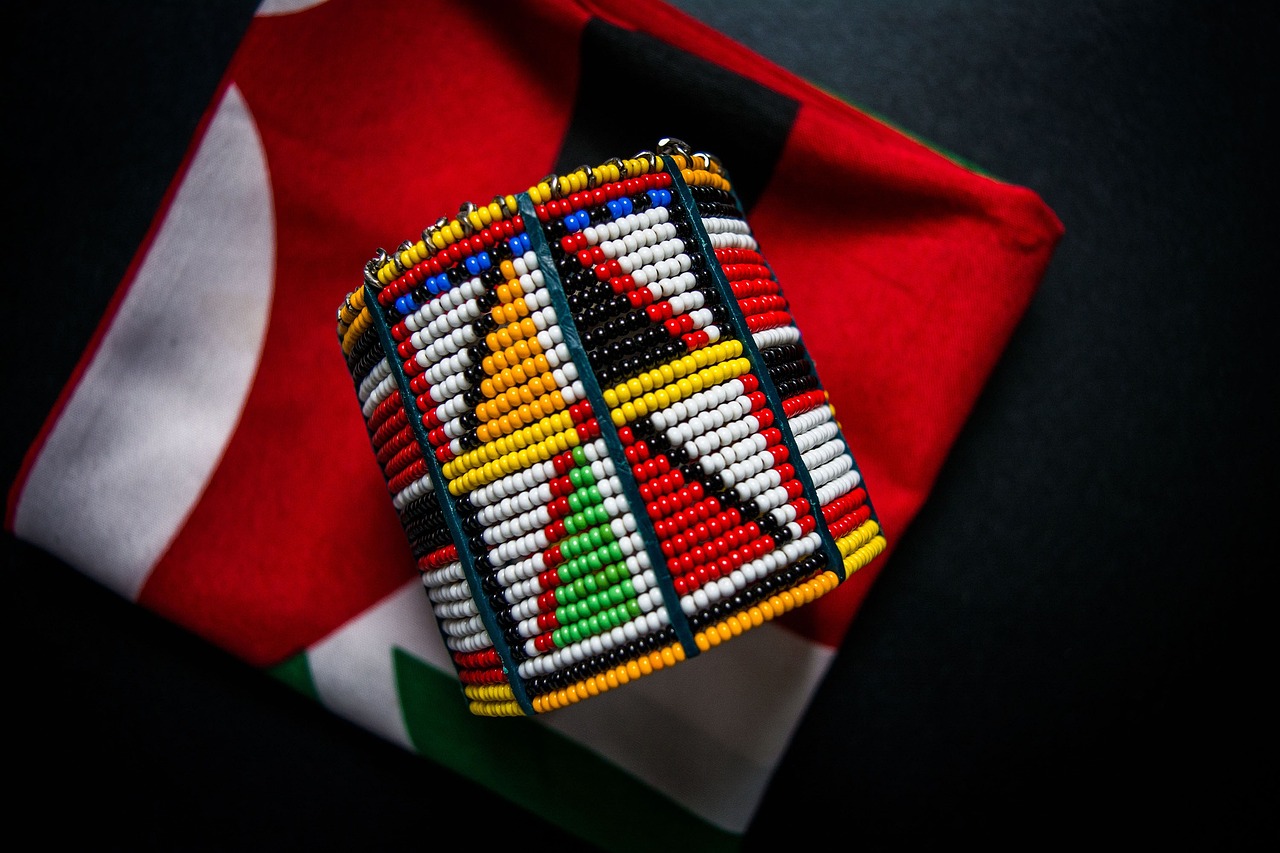
Cultural Significance of Bangles
Bangles are more than just decorative accessories; they carry profound cultural meanings across various societies. In many cultures, these circular ornaments symbolize important life events, social status, and personal identity. This section delves into the , illustrating how they reflect the traditions and beliefs of different communities.
In numerous societies, bangles are often associated with marriage and femininity. For instance, in Indian culture, a bride traditionally wears bangles as a symbol of her marital status and prosperity. The colors, materials, and designs of these bangles can vary significantly, each holding its own meaning. Red and green bangles are particularly auspicious, representing love and fertility.
In contrast, Middle Eastern cultures often view bangles as symbols of wealth and status. They are frequently made from precious metals and adorned with intricate designs, serving as a testament to the wearer’s affluence. The historical context of these bangles can be traced back to ancient trade routes, where artisans crafted exquisite pieces that conveyed both beauty and social standing.
Moreover, in African traditions, bangles play a vital role in rituals and celebrations. They are often used in ceremonies, such as weddings and initiations, symbolizing community ties and personal milestones. The materials used to create these bangles, ranging from wood to beads, reflect the rich cultural heritage and resources of the region.
As global influences continue to shape fashion, the significance of bangles is evolving. They have transcended cultural boundaries, becoming popular accessories in Western fashion while retaining their traditional meanings. This blending of styles showcases the adaptability of bangles, allowing them to maintain their cultural significance while appealing to modern aesthetics.
In conclusion, bangles are more than mere adornments; they are deeply embedded in the cultural fabric of societies around the world. Their significance varies across cultures, yet they consistently embody themes of identity, tradition, and social status. Understanding the cultural importance of bangles enhances our appreciation for these beautiful artifacts and their role in human expression.
Bangles in Indian Culture
Bangles hold a significant place in Indian culture, particularly in the context of marriage and prosperity. These ornamental accessories are more than just adornments; they symbolize a woman’s marital status and her connection to tradition.
In Indian weddings, the custom of wearing bangles is deeply ingrained. It is customary for brides to wear an array of bangles, often made of glass, gold, or other materials, to signify their new role as a married woman. The sound of the bangles clinking together is often associated with joy and celebration, marking the beginning of a new chapter in the bride’s life.
Moreover, bangles are often gifted to brides by their families, representing love and blessings for a prosperous married life. This tradition emphasizes the importance of familial ties and the continuity of cultural practices. In many communities, the color and type of bangles worn can also indicate the bride’s cultural background and the specific customs of her community.
- Red and Green Bangles: Traditionally, red symbolizes love and fertility, while green represents harmony and prosperity.
- Gold Bangles: Often considered a sign of wealth and status, gold bangles are cherished heirlooms passed down through generations.
- Glass Bangles: Widely popular among brides, glass bangles come in various vibrant colors and designs, adding a festive touch to the wedding attire.
Beyond weddings, bangles play an important role in a woman’s daily life in India. Many women wear bangles as a part of their everyday attire, believing that they bring good luck and prosperity. The act of wearing bangles is often seen as a way to connect with one’s heritage and maintain a sense of identity.
In conclusion, bangles are not merely decorative items in Indian culture; they are profound symbols of marriage, prosperity, and tradition. Their significance transcends mere aesthetics, reflecting the values and beliefs of Indian society.
Traditional Indian Bangles
are not merely decorative accessories; they are rich cultural artifacts that embody the artistry and heritage of India. These bangles are crafted from a variety of materials, each contributing to their unique charm and significance. The craftsmanship involved in creating these bangles showcases the skills passed down through generations, reflecting the dedication and creativity of artisans.
The materials used in traditional Indian bangles range from glass and metal to wood and plastic. Each material offers distinct characteristics and styles. For example, glass bangles are often brightly colored and intricately designed, symbolizing femininity and grace. In contrast, metal bangles, such as those made from gold or silver, are associated with wealth and prosperity.
| Material | Characteristics | Symbolism |
|---|---|---|
| Glass | Colorful, delicate | Femininity, beauty |
| Metal | Durable, luxurious | Wealth, status |
| Wood | Natural, rustic | Tradition, simplicity |
The designs of traditional Indian bangles are equally diverse, ranging from intricate carvings to simple, elegant patterns. Many bangles are adorned with gemstones or embellishments, enhancing their aesthetic appeal. The craftsmanship involved in creating these bangles is a testament to the rich artistic traditions of India, where each piece tells a story of cultural significance and personal expression.
In Indian culture, bangles hold a special place in rituals and celebrations, especially during weddings. They are often gifted to brides as symbols of good fortune and marital bliss. The act of wearing bangles is a cherished tradition, signifying a woman’s transition into a new phase of life.
In conclusion, traditional Indian bangles are more than just accessories; they are vibrant expressions of culture, artistry, and identity. The combination of materials, designs, and the craftsmanship involved makes them a significant part of India’s rich heritage.
Modern Interpretations of Bangles
In recent years, the world of jewelry has seen a remarkable transformation, particularly in the realm of bangles. While traditional bangles have long been symbols of culture and heritage, modern designs are redefining their place in contemporary fashion. This evolution showcases a unique blend of innovation and tradition, allowing bangles to transcend their conventional roles.
Contemporary designers are now experimenting with various materials, such as acrylic, wood, and even 3D-printed elements. This shift not only adds a fresh aesthetic but also makes bangles more accessible to a wider audience. The use of vibrant colors and unique patterns reflects modern artistic trends, appealing to younger generations who seek individuality in their accessories.
Moreover, the integration of technology into jewelry design has opened up new possibilities. For instance, some modern bangles feature smart technology, allowing wearers to track fitness or receive notifications. This fusion of functionality and style is a testament to how traditional items can adapt to contemporary lifestyles.
Despite these changes, the essence of bangles remains intact. Many modern designs still draw inspiration from traditional motifs and craftsmanship. Artisans incorporate age-old techniques, ensuring that each piece tells a story, connecting the past with the present. This cultural continuity enriches the modern bangle, making it not just a fashion statement but also a symbol of heritage.
In conclusion, the modern interpretation of bangles illustrates a fascinating journey of adaptation and creativity. As they evolve, these accessories continue to celebrate their rich history while embracing the future. The result is a captivating blend of style and significance, ensuring that bangles remain a cherished part of both traditional and contemporary wardrobes.
Bangles in Middle Eastern Cultures
Bangles hold a significant place in the cultural tapestry of the Middle East, where they are not merely decorative items but profound symbols of wealth and status. Historically, these adornments have been crafted from a variety of materials, including gold, silver, and precious stones, reflecting the social standing of the wearer.
The tradition of wearing bangles dates back to ancient civilizations in the region, where they were often associated with femininity and grace. In many Middle Eastern cultures, the number and type of bangles worn can indicate a woman’s marital status and her family’s prosperity. For instance, during weddings, it is common for brides to wear elaborate sets of bangles, signifying not only their new status but also the wealth of their families.
In contemporary society, the relevance of bangles continues to thrive. They are often featured in cultural celebrations and festivals, where their vibrant colors and intricate designs serve to enhance traditional attire. The significance of bangles transcends mere aesthetics; they embody the rich history and cultural identity of the communities that cherish them.
Moreover, with the rise of global fashion trends, Middle Eastern bangles have gained international attention. Designers are increasingly incorporating traditional elements into modern jewelry, creating pieces that appeal to a broader audience while honoring their cultural roots. This fusion of styles not only preserves the heritage of bangle-making but also introduces it to new generations.
In conclusion, bangles in Middle Eastern cultures are far more than ornamental accessories; they are powerful symbols of identity, heritage, and social standing. As they continue to evolve, their significance remains deeply rooted in the cultural narratives of the region.
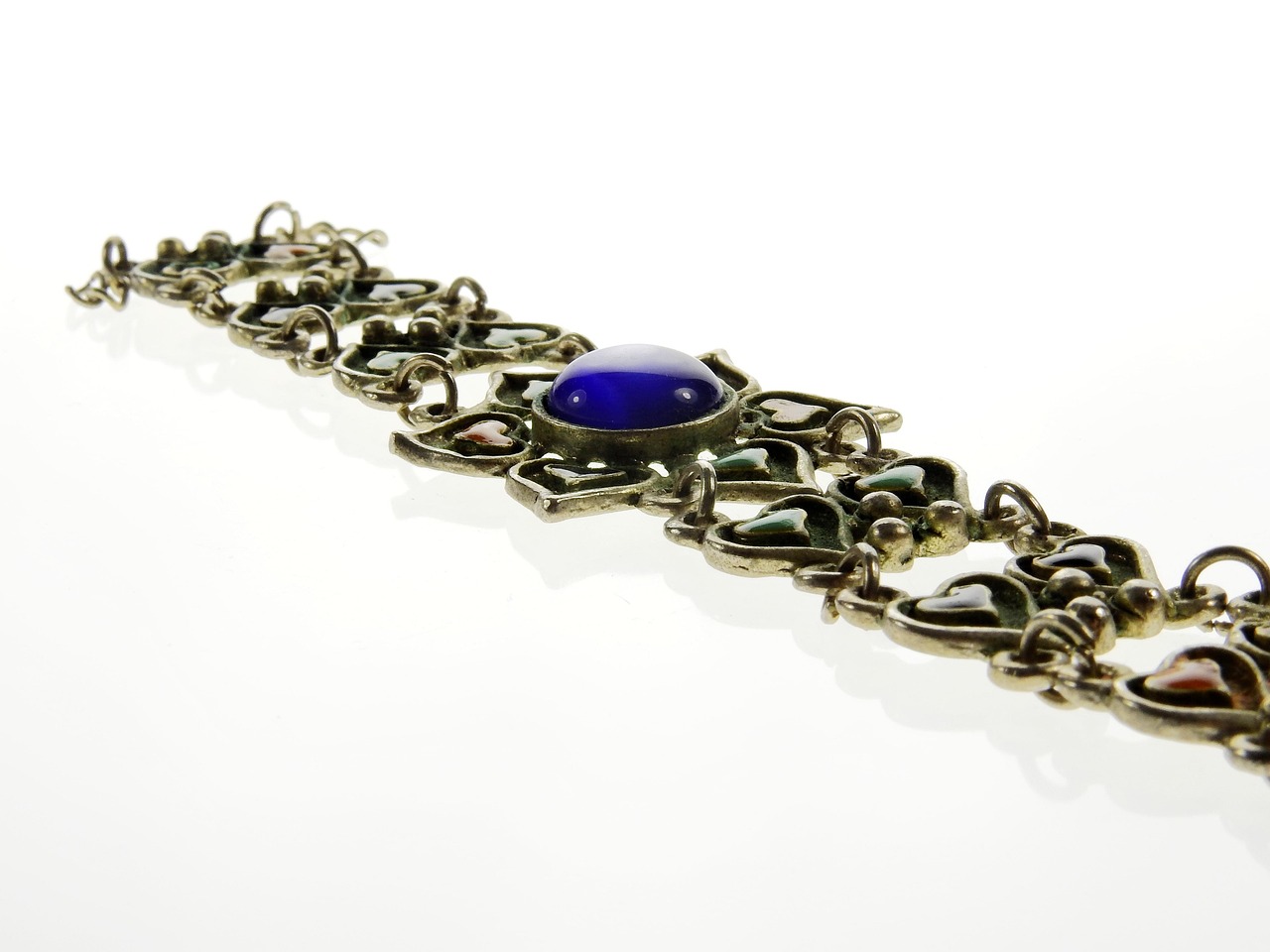
Bangles in African Traditions
Bangles hold a deep-rooted significance in African traditions, serving not only as decorative items but also as powerful symbols of cultural identity and heritage. Across the continent, various communities incorporate bangles into their rituals and celebrations, reflecting their unique histories and social values.
In many African cultures, bangles are more than mere accessories; they are integral to social identity. These adornments often signify a person’s status, age, and even marital status. For instance, in some tribes, the number and type of bangles worn can indicate a woman’s life stage or social standing. The vibrant colors and intricate designs of these bangles often tell stories about the wearer’s community and their personal journey.
During significant life events such as weddings, births, and initiation ceremonies, bangles play a crucial role. For example, in certain cultures, newlywed brides are adorned with specific bangles that symbolize their transition into womanhood and their new role within the family. This practice not only enhances the aesthetic beauty of the ceremony but also reinforces the cultural values associated with marriage and family.
| Event | Significance of Bangles |
|---|---|
| Weddings | Symbolizes the bride’s new role and responsibilities |
| Births | Celebrates the arrival of a new life |
| Initiation Ceremonies | Marks the transition into adulthood |
The materials used in crafting these bangles vary widely, ranging from metals and glass to beads made from seeds and clay. Each material not only adds to the visual appeal but also carries its own cultural significance. For instance, beads made from specific seeds may be believed to possess protective qualities, while metal bangles might symbolize strength and resilience.
In conclusion, bangles in African traditions are rich with meaning and serve as vital components of cultural expression. They not only enhance beauty during significant events but also connect individuals to their heritage and community. Understanding the role of bangles in these contexts allows for a deeper appreciation of their cultural importance.
Materials Used in African Bangles
Bangles hold a significant place in African cultures, not only as decorative items but also as symbols of identity, status, and tradition. The materials used to create these bangles are as diverse as the cultures that produce them. This subsection delves into the various materials and their cultural implications.
Traditionally, African bangles are crafted from a variety of materials, each carrying its own significance. The most common materials include:
- Metals: Bangles made from metals such as brass, copper, and aluminum are prevalent. These metals are often chosen for their durability and the ability to be molded into intricate designs. In many cultures, metal bangles symbolize strength and wealth.
- Beads: Beaded bangles are another popular form, often made from colorful glass or clay beads. These bangles are not only decorative but also represent community and connection, as the colors and patterns can signify various tribal identities or social statuses.
- Wood: Wooden bangles are crafted from indigenous trees and are valued for their natural beauty. They often carry spiritual meanings, as wood is seen as a living material that connects the wearer to nature.
- Shells: In coastal regions, shells are used to create unique bangles. These bangles symbolize a connection to the sea and are often worn during ceremonies that celebrate maritime traditions.
The choice of material in African bangles is not merely aesthetic; it reflects the cultural heritage and values of the communities that create them. For instance, a bangle made from recycled materials may symbolize sustainability and the importance of environmental conservation in modern African societies.
In conclusion, the diversity of materials used in African bangles showcases the rich cultural tapestry of the continent. Each material carries its own story, contributing to the overall significance of bangles in African traditions. Understanding these materials enhances our appreciation of the artistry and meaning behind these beautiful adornments.
Ritualistic Uses of Bangles in Africa
Bangles hold a significant place in the cultural fabric of Africa, often intertwined with rituals and ceremonies that mark important life events. Their use transcends mere adornment; they serve as symbols of identity, status, and spirituality. This section delves into the various ritualistic uses of bangles across different African cultures, illustrating their importance in both community and individual contexts.
In many African communities, bangles are integral to initiation ceremonies. For instance, during rites of passage such as coming-of-age ceremonies, young individuals are often adorned with specific bangles that symbolize their transition into adulthood. These bangles may vary in color and material, each signifying different attributes or blessings bestowed upon the initiate.
Another profound use of bangles is observed in wedding ceremonies. In several cultures, the bride is adorned with bangles that represent her new status as a married woman. The act of gifting these bangles from the groom’s family to the bride’s family is a gesture of goodwill and acceptance, reinforcing the bonds between families. The sound of the bangles clinking during the ceremony is believed to ward off evil spirits and invite prosperity and joy into the couple’s life.
Bangles also play a crucial role in funeral rites. In some cultures, it is customary for mourners to wear specific bangles as a sign of respect for the deceased. These bangles may be removed and buried with the deceased, symbolizing the end of a life cycle and the journey to the afterlife. The choice of materials and colors for these bangles can reflect the social status of the deceased, further emphasizing their significance.
Moreover, bangles are often used in cultural festivals, where they are worn to celebrate heritage and community. During these festivals, vibrant and elaborate bangles are showcased, representing the artistic expression and craftsmanship of the community. This not only strengthens cultural identity but also fosters a sense of belonging among participants.
In conclusion, the ritualistic uses of bangles in Africa are profound and multifaceted. They serve as important markers of identity, transition, and community connection. Through various ceremonies, bangles embody the rich tapestry of African cultural traditions, highlighting their enduring significance in contemporary society.

The Global Influence of Bangles
Bangles have transcended cultural boundaries, influencing fashion worldwide in remarkable ways. As traditional adornments, they have evolved into modern fashion statements, showcasing the dynamic interplay between heritage and contemporary style.
Across the globe, bangles are being embraced not just as cultural artifacts but also as symbols of personal expression. In recent years, the fashion industry has seen a surge in the popularity of statement bangles, which blend traditional craftsmanship with modern aesthetics. Designers are incorporating vibrant colors, unique materials, and innovative designs, making bangles accessible to a broader audience.
In Western fashion, for instance, bangles have become a staple accessory. They are often paired with casual outfits, adding a touch of elegance and flair. The fusion of different styles has led to the creation of eclectic collections that appeal to diverse tastes. This trend reflects a growing appreciation for global cultures and their artistry, as consumers seek to connect with the stories behind the pieces they wear.
Furthermore, the rise of social media platforms has played a pivotal role in popularizing bangles globally. Influencers and fashion icons showcase their unique styles, inspiring followers to explore various ways to incorporate bangles into their wardrobes. This visibility has encouraged a renewed interest in traditional designs, prompting artisans to innovate while preserving their cultural significance.
As we look to the future, the evolution of bangles in modern society seems promising. The integration of sustainable materials and ethical practices is becoming increasingly important, with many designers focusing on environmentally friendly production methods. This shift not only respects cultural heritage but also aligns with the growing demand for responsible fashion.
In conclusion, the global influence of bangles is a testament to their enduring appeal and adaptability. As they continue to bridge cultural divides, bangles will remain a significant element in the ever-evolving landscape of fashion.
Bangles in Western Fashion
Bangles have become a significant trend in Western fashion, serving not only as stylish accessories but also as symbols of cultural fusion. In recent years, these ornate pieces have transcended their traditional roots, finding a place in modern wardrobes across the globe.
The popularity of bangles in the West can be attributed to their versatility. They can be worn in various settings, from casual outings to formal events, making them a staple in many fashion-conscious individuals’ collections. Designers often experiment with different materials, colors, and designs, allowing for a wide range of styles that appeal to diverse tastes.
One of the most fascinating aspects of bangles in Western fashion is the fusion of styles from different cultures. This blending creates unique pieces that reflect a global influence. For instance, you might find bangles that incorporate traditional Indian designs, such as intricate carvings and vibrant colors, alongside minimalist Scandinavian aesthetics. This cross-cultural exchange enriches the fashion landscape, making bangles a symbol of unity in diversity.
Moreover, the rise of social media has played a pivotal role in the trend of bangles. Influencers and fashion bloggers showcase their bangle collections, inspiring followers to embrace these accessories. The visual appeal of bangles, combined with their ability to tell a story of cultural heritage, has made them a favorite among fashion enthusiasts.
As we look to the future, it is clear that the role of bangles in Western fashion will continue to evolve. With sustainability becoming a priority, many designers are exploring eco-friendly materials and ethical production methods. This shift not only caters to the growing demand for conscious fashion but also ensures that the art of bangle-making is preserved for future generations.
In conclusion, bangles have carved a niche in Western fashion, blending tradition with modernity. Their ability to adapt and resonate with diverse audiences highlights their enduring appeal, making them more than just accessories but rather a celebration of cultural richness.
Future of Bangles in Modern Society
The future of bangles is an intriguing intersection of tradition and modernity. As fashion trends evolve, so too do the designs and meanings associated with bangles. This section explores the potential developments in bangle designs and their cultural significance moving forward.
In recent years, the world of fashion has seen a resurgence in the popularity of bangles, driven by a desire for personal expression and cultural appreciation. Designers are increasingly experimenting with innovative materials, such as sustainable woods, recycled metals, and even 3D-printed components, allowing for unique and customizable pieces that resonate with a broader audience.
Moreover, technology is playing a pivotal role in shaping the future of bangles. With the rise of augmented reality and virtual try-ons, consumers can now visualize how different styles and colors will look on them before making a purchase. This interactive experience not only enhances the shopping process but also encourages more personalized choices.
As we look ahead, the cultural significance of bangles is also poised to evolve. While traditional meanings—such as symbols of marriage and prosperity—remain important, there is a growing trend towards using bangles as a medium for social commentary. For instance, some designers are incorporating messages of empowerment and sustainability into their creations, thus transforming bangles into statements of identity and values.
| Trend | Description |
|---|---|
| Customizable Designs | Consumers seek personalized bangles that reflect their individual styles. |
| Use of Technology | Augmented reality enhances the shopping experience for bangles. |
| Cultural Commentary | Designers incorporate messages of empowerment and sustainability. |
In conclusion, the future of bangles is not just about aesthetics; it is about embracing change while honoring tradition. As designers continue to innovate and consumers become more conscious of their choices, bangles will undoubtedly remain a significant accessory, reflecting both personal style and cultural narratives.
Frequently Asked Questions
- What are the historical origins of bangles?
Bangles have a rich history that dates back to ancient civilizations. They were initially made from natural materials like wood and clay, evolving over time into intricate designs crafted from metals, glass, and other materials.
- Why are bangles significant in Indian culture?
In India, bangles symbolize marriage and prosperity. They are an essential part of bridal attire and are believed to bring good fortune and happiness to married women.
- What materials are commonly used in African bangles?
African bangles are made from a variety of materials, including metals, beads, and even natural fibers. Each material holds cultural significance and reflects the artisan’s heritage.
- How have modern trends influenced bangle designs?
Modern trends have led to a fusion of traditional and contemporary styles in bangle designs. Today, you can find bangles that incorporate unique patterns, colors, and materials, making them fashionable across cultures.
- Are bangles still used in rituals today?
Yes, bangles continue to play a vital role in various rituals and celebrations, especially in African and Indian cultures, where they are integral to ceremonies and social identity.



